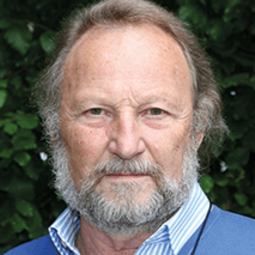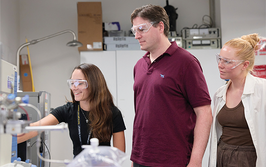Pat Sandra
The Power List 2015

Pat Sandra
Emeritus Professor, Organic Chemistry, Ghent University; Founder and President, Research Institute for Chromatography, Kortrijk, Belgium.
Most important lesson Never go in (scientific) competition with colleagues or organizations that are stronger or have more possibilities than yourself... try to collaborate.
Encounters with serendipity Stir bar sorptive extraction was invented (by accident) through a controversial discussion in the literature on the absorption–adsorption properties of polydimethylsiloxane (PDMS). Our observations on the partitioning mechanism between water and PDMS were called into question. Solid phase microextraction with a PDMS fiber of polychlorobiphenyls spiked in water indicated that adsorption was taking place because the log P value controlling the PDMS/water distribution was not followed. However, repeating the experiment, we came to the conclusion that most of the PCBs were adsorbed on the Teflon stir bar used in the experiment. Within a minute, we came up with the idea to coat stir bars with PDMS, resulting in a very sensitive new sample preparation method. Thousands of stir bars, commercialized as Twister, have been sold since that time.
Most unexpected moment By far the most unexpected thing that happened – and which was, in the end, of utmost importance in my career development – was the Belgian dioxin crisis in 1999. I was able to prove the link between dioxins present in our food and contamination with transformer oil or polychlorobiphenyls (PCBs). The result was that analysis of food could be restricted to PCB analysis rather than the very expensive, time-consuming and ultra-trace dioxin analysis via capillary gas chromatography hyphenated to high-resolution mass spectrometry. Just imagine more than 50,000 samples being analyzed by the latter technique!
Eye on the horizon The Research Institute for Chromatography (RIC) has steady growth and with 30 coworkers we try continuously to combine business and research. We are active in different fields using all separation methods combined with state-of-the-art mass spectrometers. Mass spectrometry is becoming more and more important (we run more than ten MS systems at RIC) but high-resolution chromatography (1D or 2D) will remain the best inlet system.
Our life science activities recognize the greatest growth and detailed analysis of biomolecules, and especially of biopharmaceuticals, is scientifically speaking very interesting and challenging, and at the same time rewarding.
Most chromatographic advances in the years to come should be made for analysis of macromolecules. Because of their heterogeneity, there is an urgent need for high resolution at high molecular weights.
Sitting Down With interview: tas.txp.to/1015/Sandra


















